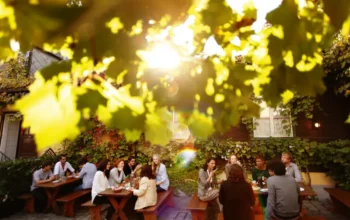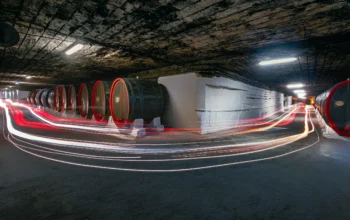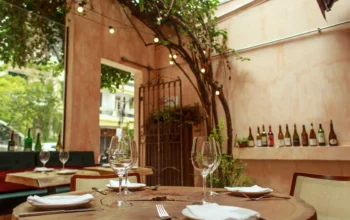For a long time, the image of the Moselle, both as a holiday region and as far as wine was concerned, did not fare well. Old-fashioned and boring it was said to be and the wine was known as a uniformity sausage; tasty was different. How different is it now? Since the turn of the century, winemakers have focused on quality and you can taste it. As a wine holiday region, it is also great: in the beautiful valley with its steep slopes, you can hike and biked in search of the tastiest wines from your accommodation with the winemaker. What more could you want?
BY KEES VERPLANKE
The Moselle Valley is Germany's oldest wine region. The Romans recognised the ideal conditions and planted vineyards, which were continued and expanded by the nuns and monks of the monasteries. Today, some 5,000 Winzer (winemakers) can be found there. Both climate and soil are ideally suited to viticulture. Due to its sheltered location, the Moselle valley has one of the warmest climates in Germany with a long growing season: from April to October or even until November with little temperature fluctuation. In the MittelMosel/Bernkastel - the Riesling region par excellence - the soil consists of blue and grey slate from the Devonian, a geological period some 420 to 360 million years ago. The slate gravel in the vineyard absorbs heat and gradually releases it at night.
Optimal heat
The slopes on which the vineyards are located are the steepest in the world. This ensures that the slopes absorb heat optimally. The subsoil contains sufficient water and nutrients (minerals), but the vines have to do their best for that and thus root deeply. This produces high-quality Rieslings from elegantly mineral to beautiful dessert wines that can be stored for decades. More than half of the grapes grown are therefore Rieslings. After that, müller-thurgau and elbling - an old grape that gives fresh, dry, uncomplicated wines - are most commonly planted. Grauburgunder (pinot gris), weissburgunder (pinot blanc), auxerrois and chardonnay are on the rise, especially on the chalky soils of the Upper Mosel. Red dornfelder and spätburgunder (pinot noir) are also increasingly planted. Markus Molitor is the 'king of spätburgunder' in the Moselle. A number of vineyards such as the Wehlener Sonnenuhr, the Trittenheimer Apotheke and the Ürziger Würzgarten are so-called Grosses Gewächs vineyards, or Grand Crus.
You can read the whole article in WINELIFE #63. Buy it in shop or order it here.
Don't want to miss a single edition? Subscribe then subscribe to Winelife magazine now!




